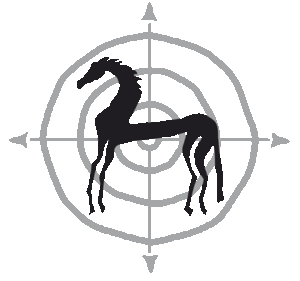Help! Are these hind hooves too short? How to evaluate hoof length
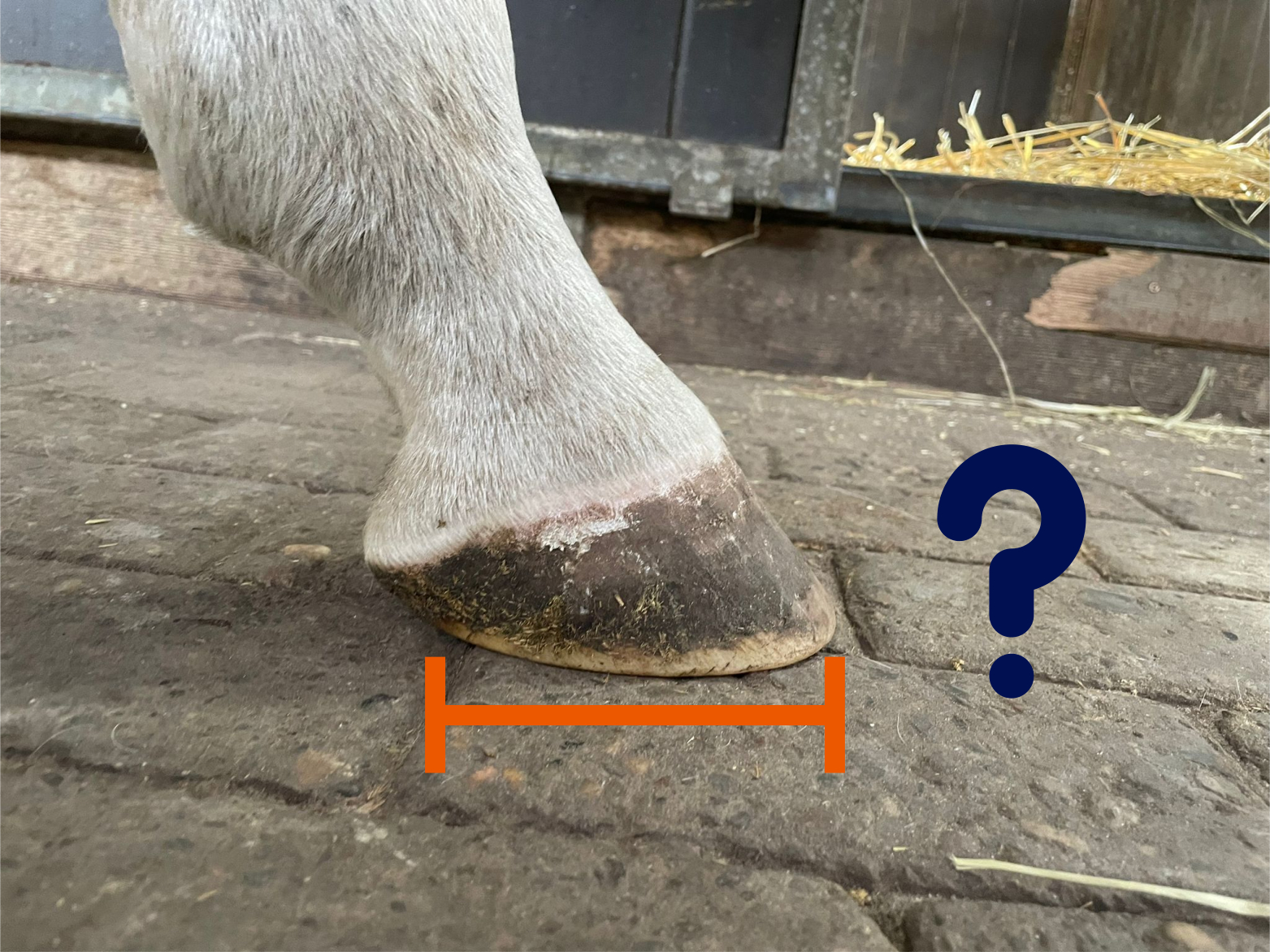
Help! Are these hind hooves too short? This urgent question was sent to me by a young woman who has been traveling some months.
When she came back home and went to see her horse, her first reaction was that the hind hooves were looking ‘weird’ – too short, and also too ‘flat’.
She sent me some pictures and asked me what she should do.
Therefore, this blog post is about how to evaluate hoof length. And more specifically: hind hoof length.
After all: don’t we all sometimes look at our horse’s hooves and think they look a bit weird? But we cannot really pinpoint why. Is it time to call your hoof trimmer or farrier?
You will find our conclusions and recommendations at the end of this blog post.
Don’t forget: Do YOU have hoof questions you would like help with? Contact us!
Are we talking about the same thing…?
Whenever I get such a question, it’s important to not jump to any conclusions without knowing all the facts. It is essential to be really clear on what we are talking about.
And it’s even more essential to look at ‘the bigger picture’. Meaning the whole horse, and not just one or two hooves.
So the first question is: What do you mean by ‘the hoof is too short’?
For a hoof care specialist (a barefoot trimmer or a farrier), ‘too short’ usually means the length of the hoof.
But for some people, ‘too short’ would mean that the wall length is too short – or maybe that the hoof doesn’t have enough height.
The picture below explains what is usually meant with hoof height and hoof length.
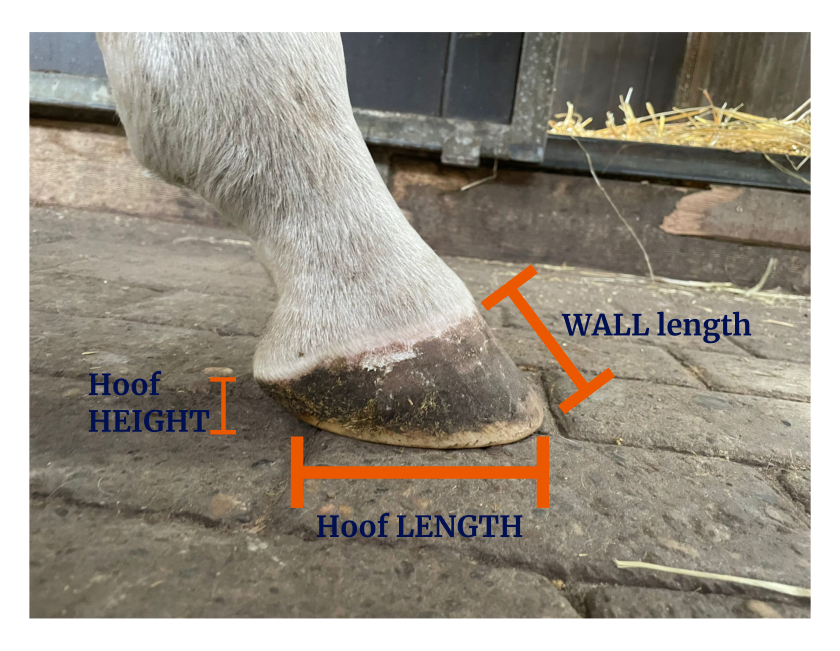
When discussing hooves: make sure you are talking about the same thing! Here you can see the difference between hoof LENGTH, hoof HEIGHT and WALL LENGTH.
How to evaluate hoof length: First, look at the horse!
It’s impossible to do a good hoof evaluation without knowing anything about the horse on top of those hooves!
Some useful facts for our evaluation:
- These pictures are of an older horse (24) which has been barefoot for many years already.
- This horse is a purebred Trakehner – which often means fairly ‘light’ and elegant horses.
She is generally in a good condition and is still lightly ridden/trained. - The horse moves without problems on softer surfaces, but can be sensitive on stony and uneven hard surfaces.
- Since this was a very wet winter, the horse has had some problems with pastern dermatitis (also know as ‘mud fever’, ‘scratches’ or ‘cracked heels’).
- The horse has some puffiness around the fetlocks. This can be from the mud fever. (Although it’s also not uncommon for older horses to have some age-related puffiness in the legs – just like older humans sometimes experience some swelling in their legs.)
- The last hoof trim was around 5 weeks before these pictures was taken. Which means the hooves probably have grown about 1 cm since then.
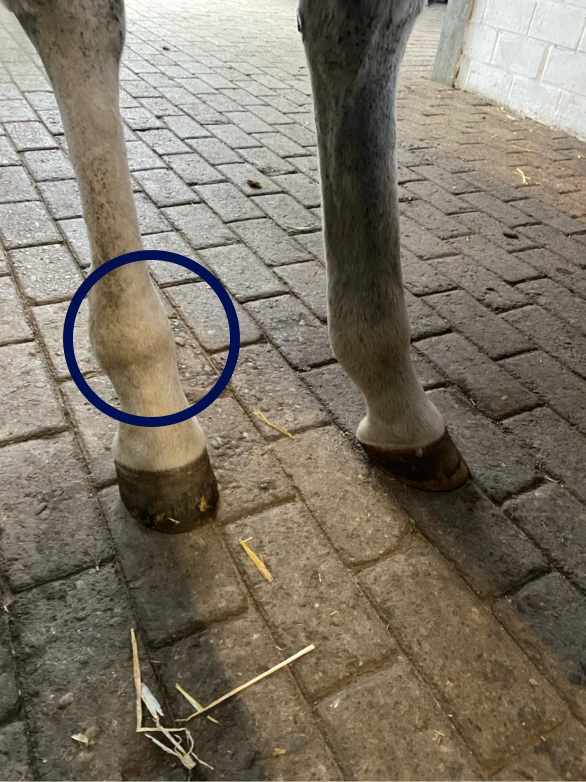
From this picture it’s clear that this is an elegant horse with a light bone structure. There is some puffiness around the fetlocks. The hooves look fairly small.
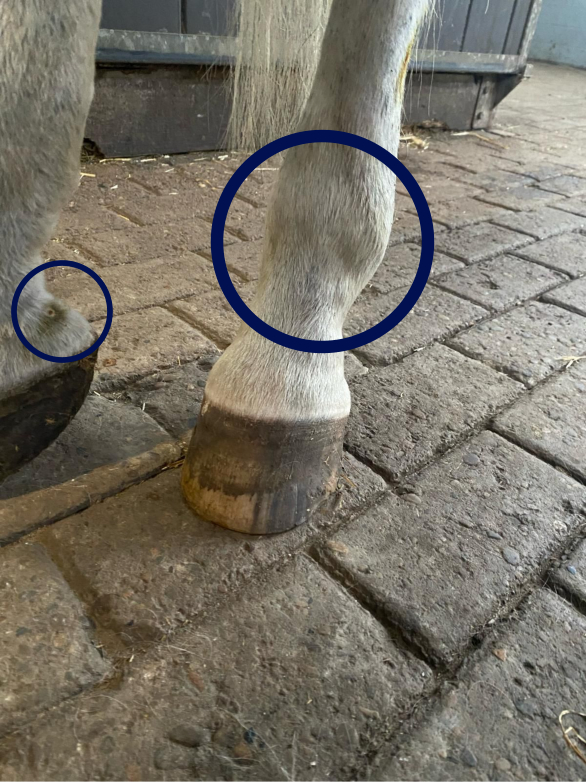
On this picture, too, you can see some puffiness around the fetlock, and a small spot of ‘mud fever’ in one of the heels.
First impressions
The picture where you can see the legs show clearly that this is a very ‘refined’ and elegant horse, with a light bone structure.
Horses with such a light bone structure usually also have fairly small hooves (not ‘pancakes’). The size of the hoof looks to be ‘right’ for this horse.
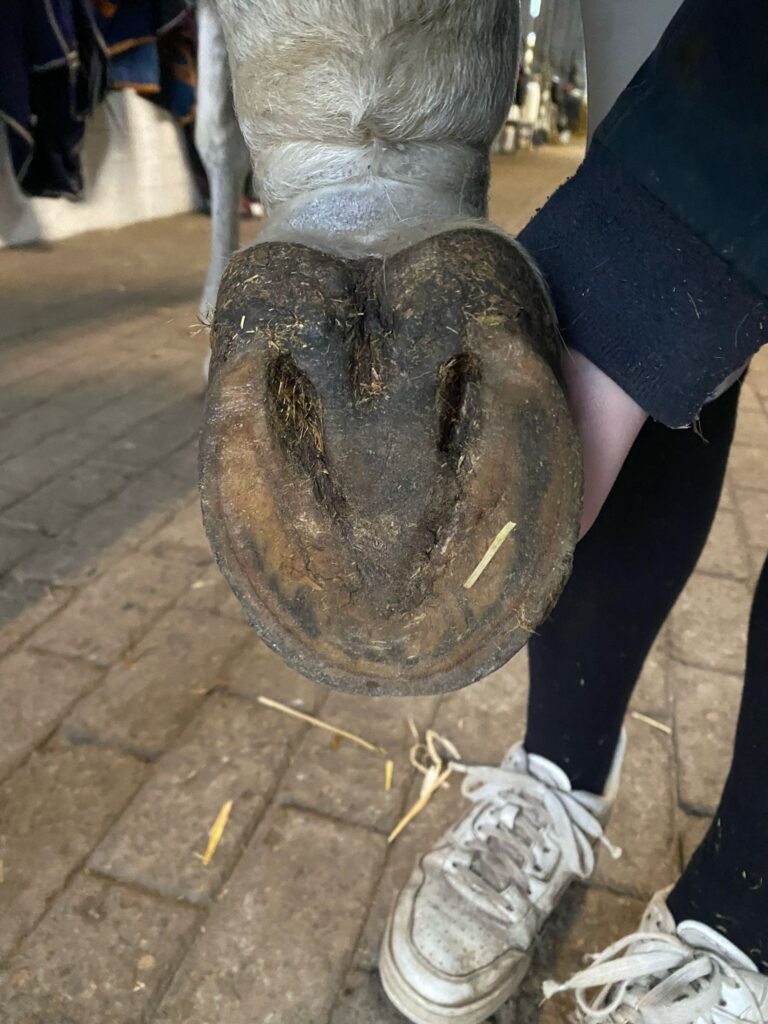
Nice hind hoof, typical of a horse that has been barefoot for a long time. The bulbs are almost horizontal, nice big frog, good wall. The form is more oval (typical for a hind hoof). The whole hoof gives a nice, ‘open’ impression.
The picture above shows a nice barefoot hind hoof which is not especially contracted.
Hind hooves generally have a more oval form than front hooves (front hooves are more round).
This hind hoof, too, is more oval than round. But it’s not very ‘narrow’: the bulbs and back end of the hoof are nicely ‘open’ and wide. The frog, too, is wide and substantial.
The bars are fairly high, and ‘filling out’ part of the sole. They seem to be lying over the sole, especially in the front of the hoof
Are these hind hooves too short – or actually too long…?!?
When we look at the hoof sole / the underside of the hoof, something interesting shows.
It is clear from the picture that there is a good amount of hoof wall all around the hoof.
Hoof wall usually grows about 1 centimeter a month. So this might be consistent with a hoof trim approx. 5 weeks before the picture was taken. (But of course we don’t know how much hoof was taken 5 weeks ago, so this is hard to evaluate from just this picture.)
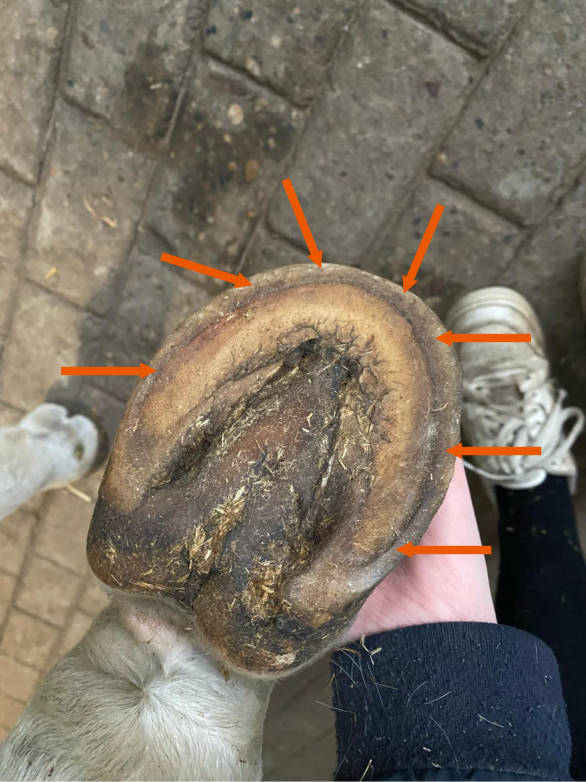
The underside of the hoof shows a good amount of wall growth, all around the hoof (including the front of the toe).
Seen from the underside, the hoof does not look short at all.
On the contrary: it even looks a bit long in the toe!
And when the toe gets too long, this has several unwanted effects.
The first effect is that the long toe acts as a ‘lever’ that pushes the weight down on the heels. This means that the heels can wear down too much and get too low.
Therefore, in any horse that is low in the heel area it is very important to keep the toe short enough.
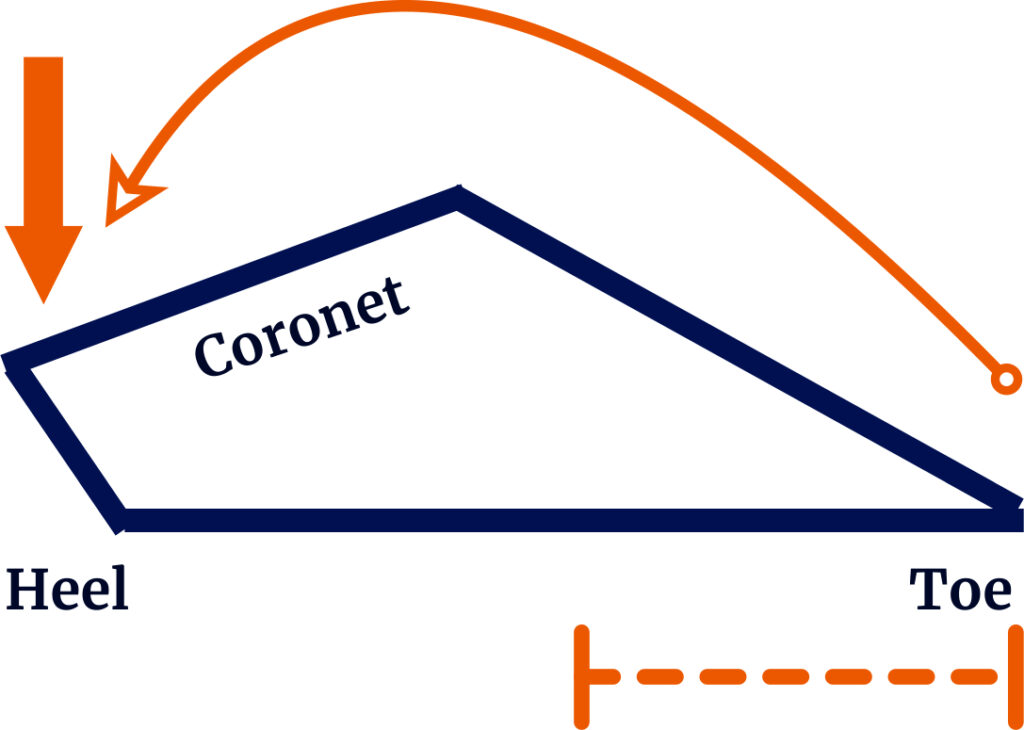
This diagram shows how the heel will be pushed down if the toe is too long.
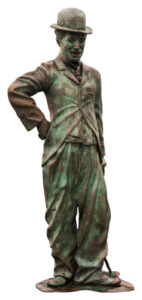
Your horse should not move like Charlie Chaplin!
The second effect is that horses might start moving ‘around’ the long toe, instead of moving their leg forward in a straight line.
(You can compare this too somebody walking in shoes that are too big – you cannot ‘roll over’ your feet in a normal way.)
If the horse cannot move its legs in a straight line forward, this will put strain and extra wear and tear on the joints and structures in the leg, pelvis etcetera.
Is this hoof too flat – or too full?
The owner of the horse also remarked that the undersides of the hooves looked very ‘flat’.
Healthy hooves are not flat – they are almost shaped like a bowl, with a certain amount of depth (‘concavity’).
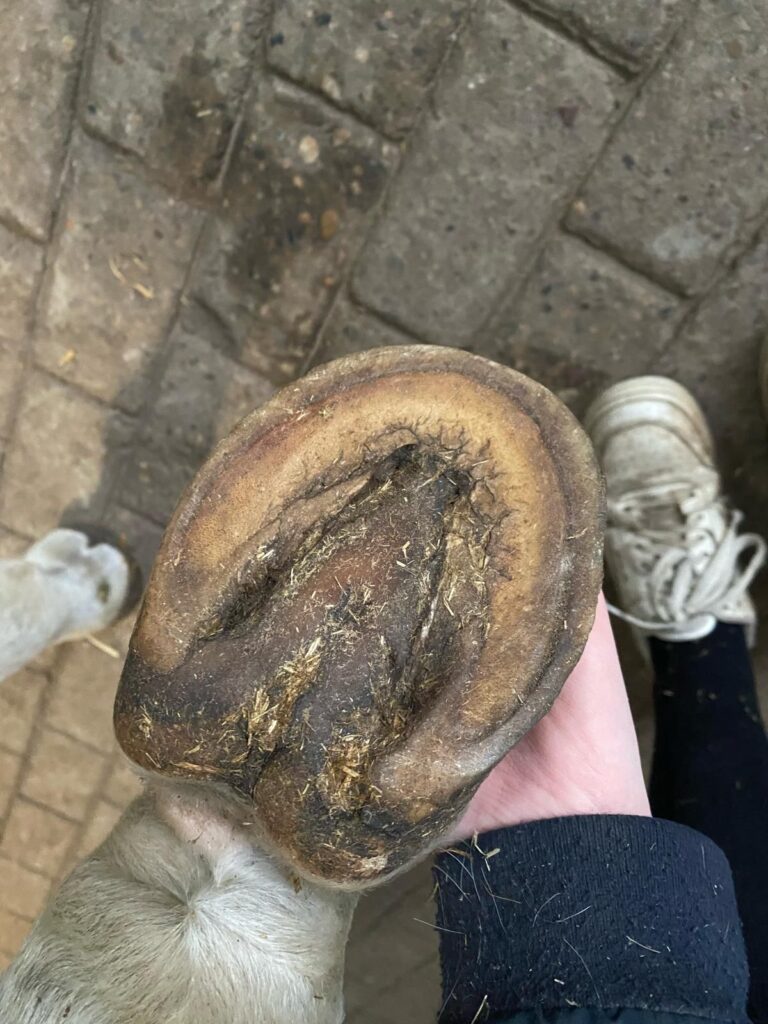
From this angle, the hoof can look somewhat ‘flat’ (as if it is not having enough concavity).
However, the picture taken from another angle shows that the hoof actually does have a good amount of depth. The ‘grooves’ next to the bars are quite deep.
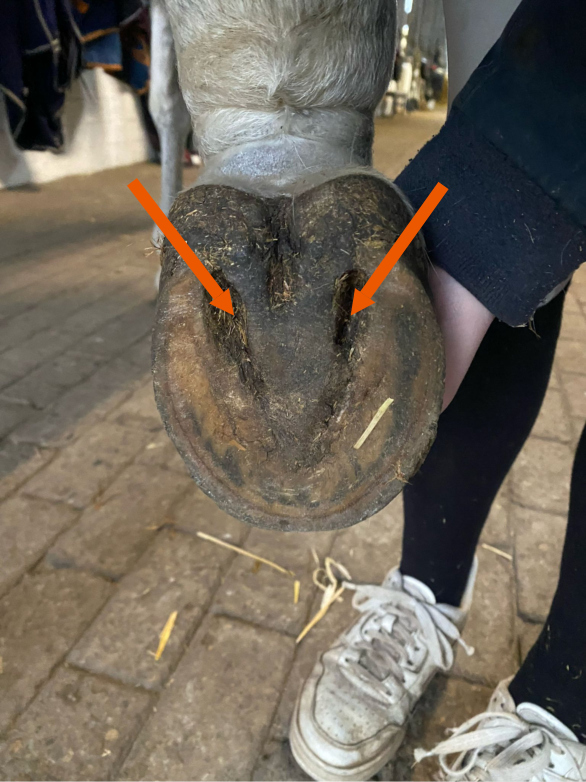
This picture shows that the hoof actually does have quite some depth and concavity, as shown by the deep grooves next to the frog.
The bar area is fairly ‘overgrown’. The bars are both long, high, and pushing against and laying over the sole of the hoof.
The ‘raggedy’ area near the toe of the hoof is actually also bar horn that has migrated there, split and cracked.
So in this hoof, the problem might not be that the hoof is too flat / does not have enough concavity. The problem might be that the concavity of the hoof (the ‘bowl’) is filled with all this extra bar horn. And, that the concavity would look normal again if the excess bar material would be removed.
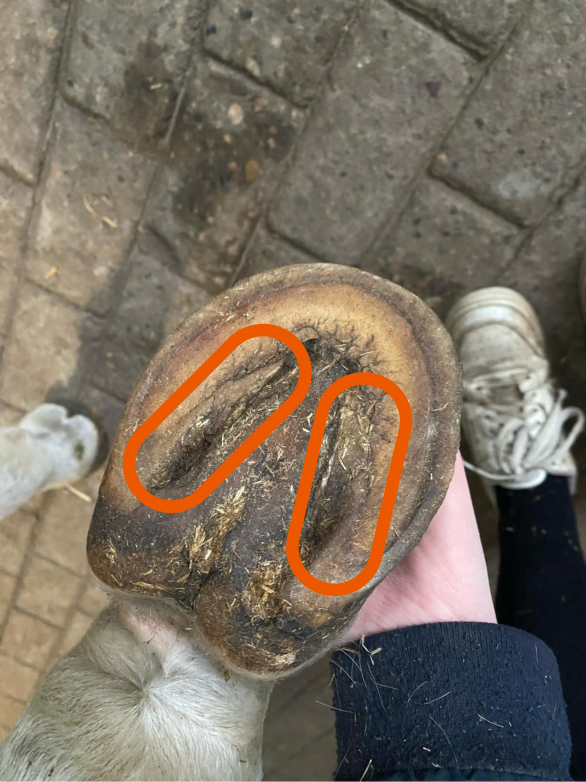
The bars are very high, long and growing over the sole of the hoof. Maybe this hoof will show normal concavity (not look ‘too flat’) if this excess bar horn is removed?
The pressure test
According to the owner, the horse moves fine without boots on softer, even surfaces. But the mare can move ‘ouchy’ on stony ground or hard and uneven surfaces.
Of course it’s impossible to see from a picture how much sole a horse has (how thick the sole is), and if the sole is hard or soft.
Therefore I asked the owner to do a little ‘pressure test’: she should press with her thumb on the area near the toe, and feel if that is soft and pliable. Or the opposite: hard and inflexible.
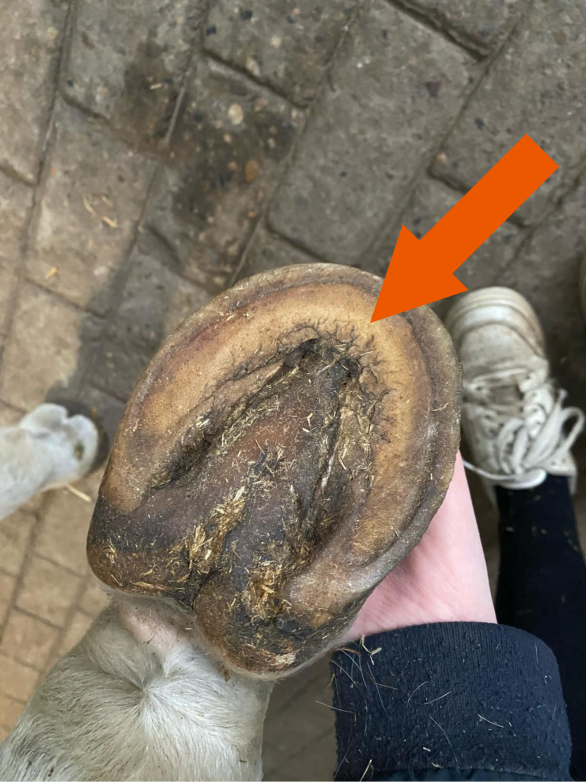
The owner reported back that there was no flexibility of the sole in the toe area.
That was not a surprise, since there is quite a bit of overlaying (and very hard) bar material in the toe area of the sole.
This barn horn is not really supposed to be there. But in this situation, we can use it to our advantage: we can shorten the hoof wall in the toe area. Even though that puts the horse more on the sole in the toe area, the sole will not be too thin because of the overlaying bar horn.
In other words: Here we can shorten the toe, without much of a risk that the horse will get even more ‘ouchy’. A shorter toe means less pressure on the heels – and it will allow the horse to move as correctly and balanced as possible. Which is an important factor in keeping any horse comfortable, and even more so in older horses.
Is the weather giving your horse a continous footbath?
Long periods of wet weather are not just unpleasant for us humans – they can also negatively impact your horse’s health.
One example is ‘mud fever’ (pastern dermatitis – also know as ‘scratches’ or ‘cracked heels’). This is typically something you see less of in summer, and more often in rainy and muddy periods.
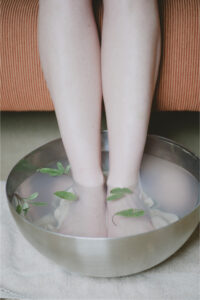
Our feet get soft in a foot bath – that applies to horse feet, too!
Standing on a wet surface, or in mud, also has an effect on your horse’s hooves.
Everybody knows how your feet look if you have been sitting in the bath for a long time…. the skin on your feet gets very soft.
The same thing happens with horsefeet. If the hooves are continuously wet, after a while the soles will get soft.
This also means that the horse ‘suddenly’ might move more sensitively on hard surfaces, or on gravel.
In itself, that’s not a problem – the hooves will get harder again when they dry up. For example, when the rain season stops. Or when the horse gets stabled on dry bedding such as shavings.
The only thing we have to do is to use boots when we take the horse out on hard, uneven ground, or on gravel roads during such a wet period.
Conclusions so far
Even though the owner was very worried about her horse, luckily the hoof problems in this horse seem not too difficult to solve.
To sum up our conclusions:
- This is a light and elegant horse – the hooves have a normal size and lenght for this type of horse.
- The hooves seem to be healthy, with a nice open shape and a good frog.
- Wall growth seems to be normal – the hoof length looks as can be expected appr. 5 weeks after a trim.
- The puffiness in the legs can be from the mud fever, maybe aggravated by the age of the horse. As long as the puffiness disappears after exercise, it should not be a problem.
- Weather conditions where the horse is living have been unusually wet for a long time this winter. This can be a contributing factor in making the horse more ‘ouchy’ on gravel and on hard, uneven surfaces.
- The one measurement we do not have is the actual heel height. That measurement would be helpful in considering if the hoof actually is ‘too low’.
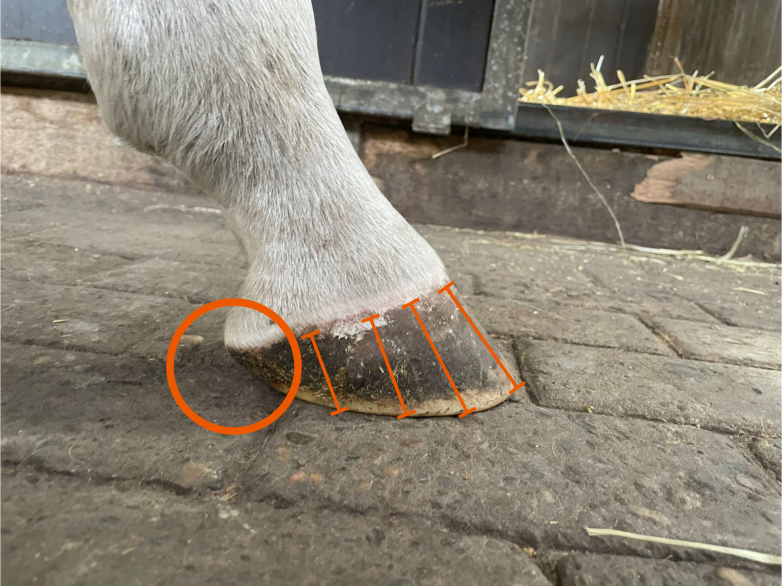
The wall length looks fine in this hoof. We don’t know the exact height of the heels. That information would be useful for an even more thorough evaluation.
Remember: Does YOUR horse have a hoof problem you would like some help with? Or would you like a second opinion? Get in touch with us for a quick answer!
Our recommendations
Here are the recommendations we gave to this horse owner, after considering all of the above:
- In general: since this is an older horse, it might be useful to do a blood test. This can give information about the level of vitamins that are specifically related to hoof growth. Many horses do fine without supplements for many years, but they might need a little ‘boost’ when they get older.
- Take pictures of the hooves before and after the next hoof trims. This will give more accurate information about the amount of hoof growth. (Which can vary by season.)
- As long as the weather is wet, try to keep the horse and the hooves dry for at least some hours every day. So they get a chance to ‘dry up’.
- It’s also possible to use a hoof hardener (not a hoof oil). There are several kinds on the market that are just ‘painted’ over the underside of the hoof. If it’s really wet, this is something that can be done every day.
- As regards hoof care: the toe can be shortened about 1 cm. This will create a better ‘roll over’, let the horse move more correctly, and take pressure off the heel area. If the hooves grow a lot, ask your hoof care specialist how to shorten the toe with a rasp in between his/her visits. That can help a lot and it’s not difficult.
- The bar area can be cleaned up. This will give more precise information about the concavity of the hooves. Cleaning up the bar area and shortening/lowering the bars will als make the horse more comfortable on hard surfaces. (See picture below.)
- Use hoof boots when riding on gravel and hard/uneven surfaces.
- Be careful when riding on asphalt without boots. Barefoot horses often move very nicely on asphalt, since it’s smooth and there are no pesky little stones. But riding on asphalt can also very quickly wear down the hooves.
- Measure the heel height. Our next blog post will tell you how to do that!
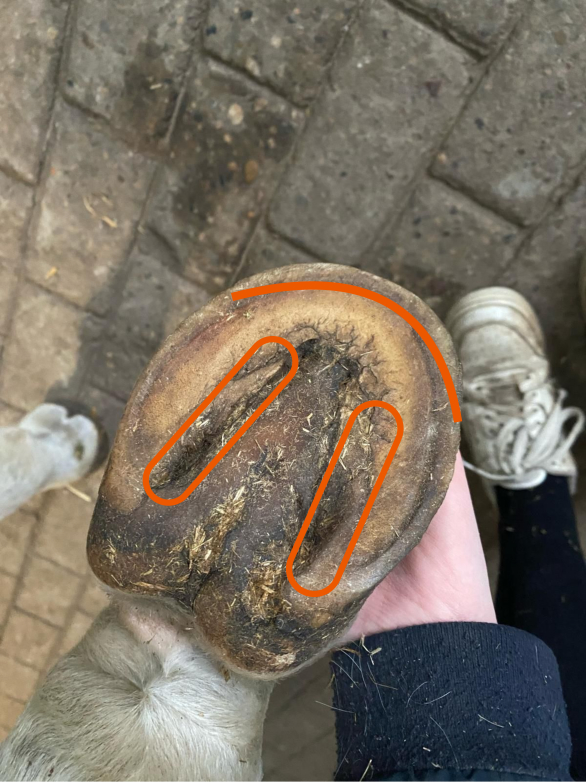
The front wall of the hoof can be shortened. The bar area should be cleaned up. These adjustments can make the horse more comfortable immediately.
Don’t miss our next blog post!
Don’t risk missing out – sign up here, and our next blog posts will automatically land in your inbox.
BONUS: you will get this FREE E-BOOK! With 10 easy tips how you can be a better rider, already today. Because our horses deserve that we are the best riders we can be.
Any questions or comments? Feel free to share with us in the comments.
We love feedback and will try to get back to you as quickly as possible.
